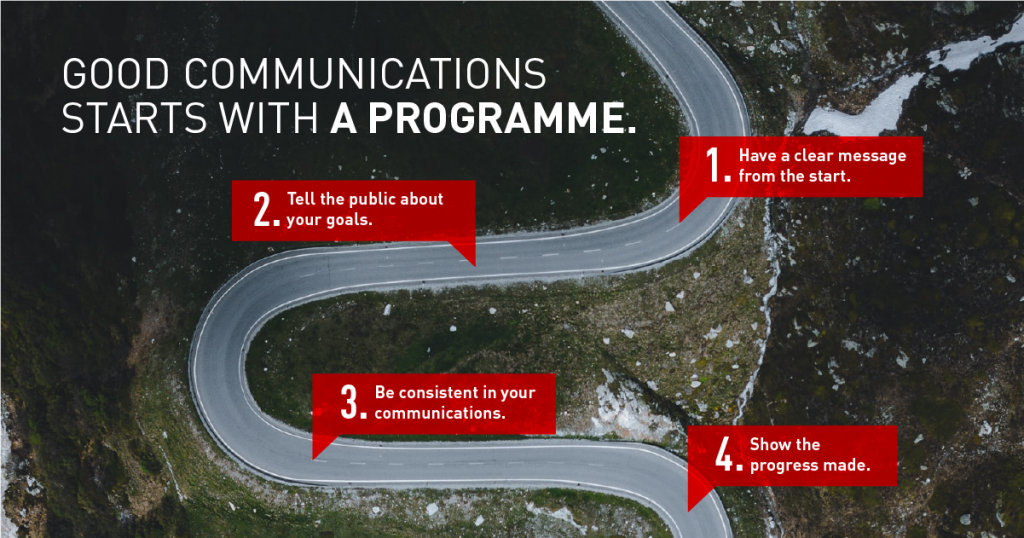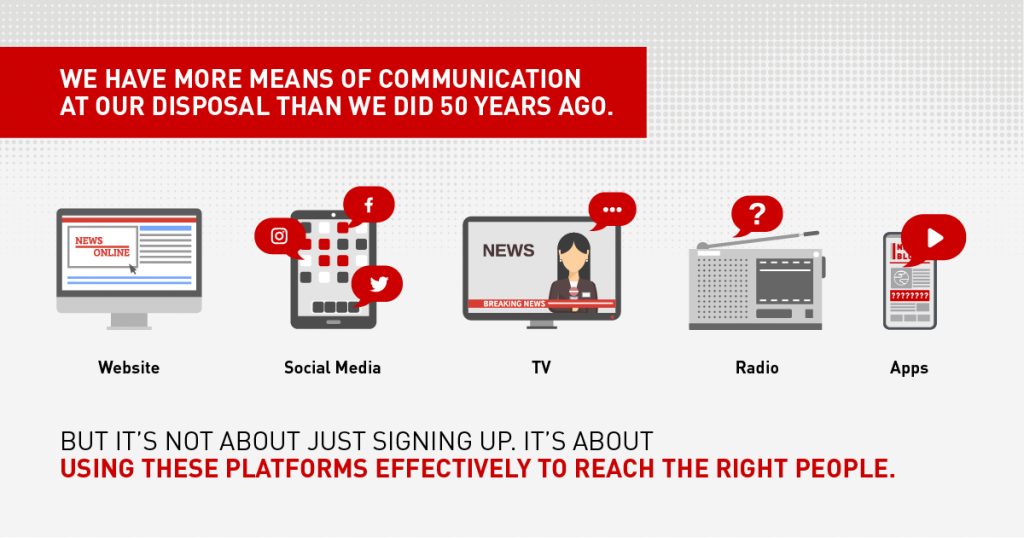By Alex Iskandar Liew, EVP & Partner of PEMANDU Associates, and Melissa Wong, Senior Associate
From stories of people taken ill from eating cooked bats and infected mandarin oranges, to reports of biological warfare and sick children being abandoned in airports, the internet has been bombarded with fake news and disinformation arising from the coronavirus. Some are even tips that have been proved to be misleading or false. One such claim, shared over 16,000 times on Facebook, claims that the virus can be prevented by keeping your throat moist and avoiding spicy food. The post claims to be from a Department of Health (DOH) Bulletin issued in the Philippines, but the information does not match the advice posted on the official DOH website which instead advises people to practice proper handwashing and cough etiquette as ways to prevent the virus’ spread.
Today, we live in a world where everyone has more or less equal access to information. On the internet, anyone is a creator of content. This totals up to a lot of voices. Voices that can be very loud due to the viral nature of social media. Voices that are dissenting due to misinformation. And, voices that bears factual inaccuracies. The Verge calls it an epistemic crisis, where large groups of people “muddle along with very different understandings of reality, undermining the ability of elected officials to govern.”[1]
In times of crisis, it’s more important than ever that the voices of public sector agencies and governments be heard over everyone else’s. But even when things are calm, maintaining open communications between the government and the public is a good habit to practice.
The role of communications in governance
The key to good governance is effective communication. While pushing out information is still necessary to government communications, it needs to be paired with the willingness and ability to engage with the public.
Thanks to technology, modes of communications has allowed for the public to be notified about changes in policies and be able to understand the need for such changes. The public wants to be engaged. They also want lightning-fast responses and user-friendly interfaces. And they want to be able to know who will be accountable when things go wrong.
It’s a lot like practicing customer service excellence in the public sector. While being informative and supportive to citizens has always been the duty of the public sector, governments today need to think of the public as a customer – looking at ways to deliver on their promises to a demanding demographic as quickly and as accurately as possible.
This is where a communication strategy can come in. A well-crafted public sector communications programme can:
- Improve effectiveness – by building broad support and legitimacy for programmes and policies
- Enhance responsiveness – by enabling government agencies to understand and respond to the public’s needs
- Ensure accountability – by explaining government stewardship and providing mechanisms to hold governments accountable
The basic principle of any effective communications is trust. Just like businesses, citizens must be able to trust not just what the government is telling them but that the government will engage with them and place them at the core of any policy. In return, public trust makes it easier to build up support for the continuing process of economic and social transformation.
Increasing trust in the government would also help ensure that the government becomes the public’s first point of contact when it comes to sourcing for information. When the people don’t feel that the government is quick enough to respond to current events, they tend to seek out and believe alternative sources of information. This leads to the rapid spread of fake news on social media sites.
How can we create effective public sector communications?

Let’s say that a government has decided to embark on a transformative agenda to improve national development. They’ve done the work to come up with a list of initiatives that need to be implemented to reach their goal. Some of these initiatives are relatively painless to the public. Others are not. So how can they justify themselves to the public?
Good communication starts with a programme. It needs to be connected to a strong identity and a clear message from the start – like a roadmap, for example. A roadmap is a detailed implementation document that defines a goal or desired outcome and includes detailed steps and milestones needed to reach it. It also serves as a communication tool, highlighting and articulating the strategic thinking behind the implementation programme – the how’s, what’s, who’s, when’s and why’s – behind both the goal and the plan for getting there.
But just establishing a true north isn’t going to be enough if the outcomes aren’t being communicated to all stakeholders and benefactors. Keeping details of a project quiet in case performance turns out to be underwhelming does little to inspire trust. Instead, it should be presented through all available mediums of communication available to the government. And be consistent – ensuring that a government speaks in unison by ensuring narratives are streamlined helps establish clear and succinct messaging in today’s cluttered and noisy media space.
Communicating progress and explaining challenges faced along the way does not weaken a government. Rather, it inspires belief and promotes transparency in the discipline of action. It also reassures that public that there has been progress made, even when it’s not immediately visible.
Know your audience
It’s also about tailoring the message to the audience – in this case, the public. The key to effective communications is knowing exactly who the target audience is and what they’re interested in. For example, Metro Trains Melbourne released a multi-platform public service awareness campaign in 2012 called ‘Dumb Ways to Die’ to promote rail safety. The train agency knew that a traditional ‘doom and gloom’ PSA would only repel Australians, which is why they decided to go down the road of making the campaign entertaining, with a catchy song and bright animation, as well as sharable, publishing the video in short bite-sized chunks across multiple platforms. The campaign went viral, racking up millions of views and resulting in a 20% reduction in rail-related accidents year on year.[2]
Knowing your audience and demonstrating that knowledge is one of the most effective ways to connect with and persuade them. Taking the time to consider their situation, analyse their needs and putting forward policies that confront their particular problems shows the public that their needs are being heard and respected.
Be agile

There’s no question that technology has made it easier for public sector agencies and governments to engage the public. Governments today have more means of communication at their disposal than they had fifty years ago. Social media channels like Twitter and Facebook have joined more traditional channels like print and television, offering more options and platforms that could be used for direct, unmediated communications with the public.
Accustomed to fast, frictionless interactions, the public now expects the same level of service quality and communication timeliness from their government. This is the new challenge faced by many public sector agencies. Public sector communication needs to be as good as the best in any industry. It needs to be fast, accurate and able to reach the audience wherever they are.
This is done by knowing what kind of content is best pushed on what channels. Each has their use. Old school government press releases may not reach as many people but are useful for media outlets to get information. In contrast, posting infographics or short videos on sharable platforms like Facebook and Twitter are great ways to disperse information across the general public. Pushing targeted reminders on social media and airing educational videos that promote behaviour change can be the difference between pushing information that can change decisions, outcomes and lives – and advice that goes ignored.
Leverage on social media
One platform in particular that governments should leverage upon is social media. Why? Firstly, platforms like Twitter and Facebook give public sector agencies and governments the chance to engage in direct dialogue with the public. It also gives the people a chance to engage back.
In addition, traditional media platforms are expensive. Social media can be a more cost-efficient platform to communicate, seed and amplify issues that the public needs to know about on a platform that they are already frequenting – and the ability to leverage on data allows governments to tailor content and messaging to a target audience. Studies have found that about half of people in the UK[3] and two-thirds of Americans[4] get their news on social media – and we expect the rest of the world isn’t any different. However, the downside of social media is that a lot of the news circulating on such platforms tends to be inaccurate and unreliable, encouraging the spread of fake news.
Herein lies an opportunity for governments and public sector agencies to step up and assume the lead in delivering both factual and authoritative information. An edge that government social media accounts have over private ones is their access to a massive amount of information such as socio-economic data and research – making it easier for people to recognise their accounts as credible. For example, the World Health Organisation (WHO) has turned its Twitter page into an FAQ resource on the coronavirus, debunking myths like eating garlic to prevent infection. Given widespread global anxiety over the coronavirus, this is both in line with the WHO’s mandate of promoting good healthcare as well as addressing an issue that people are actively searching for on social media.
What has been done?

The role of effective public sector communication is to establish foundation support. With a strong foundation of awareness and understanding, the public will find it easier to distinguish fact from fiction.
The UK has adopted a ‘digital by default’ model in 2012 to make government services so easy to access online that it becomes the natural place for people to go to.[5] It also means being open, transparent, collaborative and being open to service-users (the public) helping to shape the services offered and decision-making processes.[6] For communications, this means designing communications tactics and approaches around the web as a core channel rather than as an afterthought.
Malaysia has also followed suit, launching a multi-pronged approach to address concerns about the coronavirus. Since news of the virus spread, all government channels have been broadcasting information about the disease and preventive measures citizens could take to combat the spread of the disease. This information has been pushed on television, radio, social media as well as through an online news portal, Sebenarnya.my, which had been set up to debunk fake news stories.
Combatting the spread of fake news is one thing. Creating effective public sector communications is still an ongoing process for many governments and agencies around the world. But the prevalence of fake news on the coronavirus has taught us one thing: information (fake or otherwise) spreads extremely quickly on the internet. Effective public sector communications needs to be just as quick and agile to reach the public wherever they are. It needs to be tailored to specific audiences and clearly articulated. And above all, it needs to be engaging and interesting.
An engaged public is a happy one. And when governments keep the public engaged, it’s easier to build trust and assure the public that Big Brother is listening in the right manner and not being offensively intrusive.
[1] The Verge, 2020
[2] AdAge, 2013
[3] Ofcom, 2019
[4] Pew Research Centre, 2018
[5] UK Government Digital Strategy, 2012
[6] NCVO, 2014